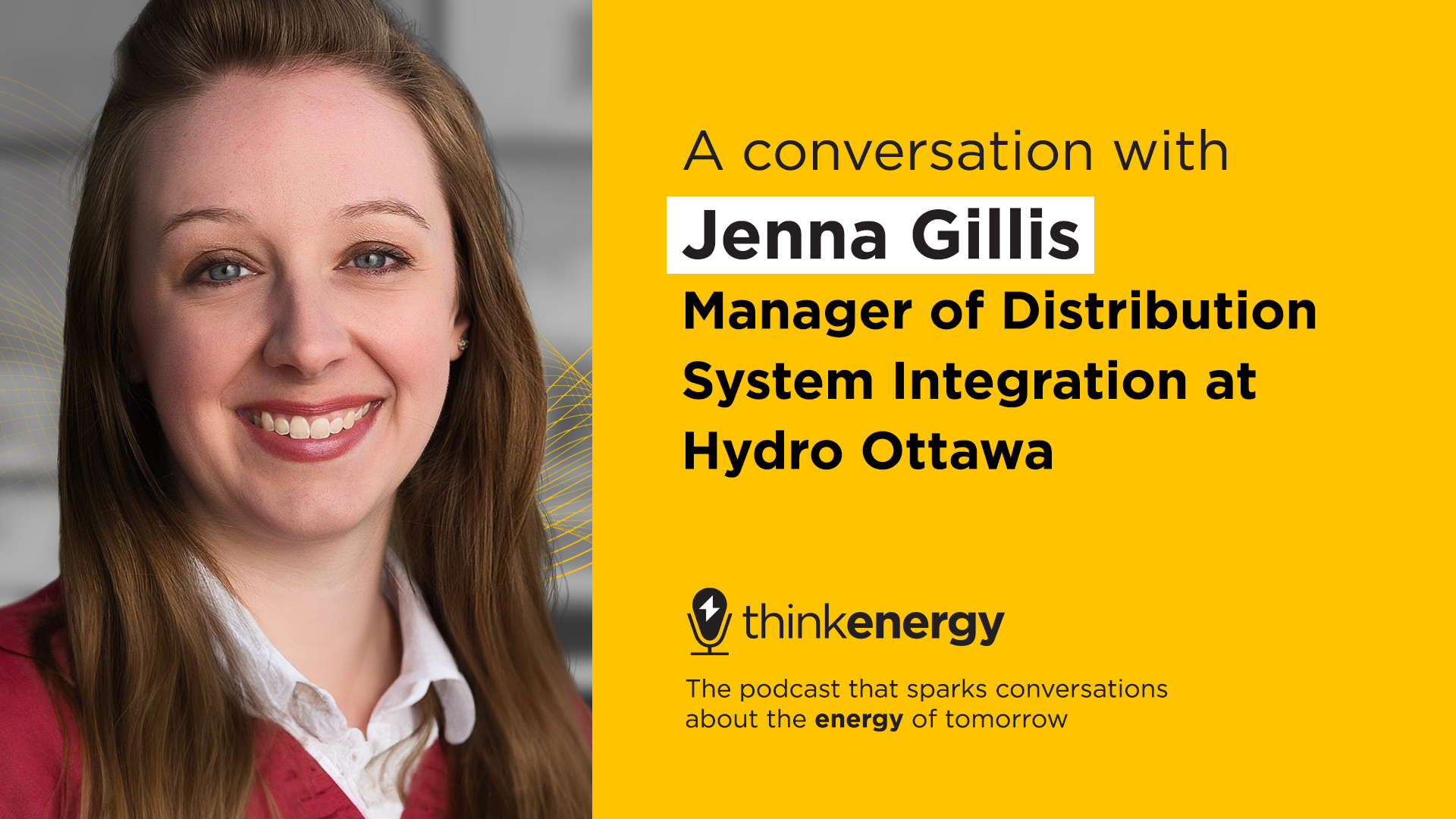It’s time to rethink the entire electricity system as we’ve known it for the last 100+ years.
Over the next decade, Hydro Ottawa will be making significant investments to improve Ottawa’s electricity grid to adapt to the realities and demands of the 21st century. The goal is to modernize the grid so it is more efficient, reliable, resilient and sustainable.
The electricity grid, often referred to as the world's largest machine, has evolved from a one-way system designed in the early 20th century to a more complex network that now needs to support renewable energy sources, two-way power flow and electric vehicles.
This transformation requires a faster pace of change and the adoption of new technologies to ensure the grid can handle the challenges of the future. Understanding that electricity is fundamental to Canada’s energy transition and integral to successfully reduce emissions for both the transportation and building sectors, Hydro Ottawa has already begun preparing for this.
“There are a number of factors that are impacting our industry,” says Jenna Gillis, Manager of Distribution System Integration at Hydro Ottawa. “Electrification and climate change, decentralized energy generation and energy storage - are all pushing us to accelerate the rate at which we deploy new technology. The rate of change is just getting faster and our grid needs to be in a position to handle growing and changing demand, while maintaining its reliability and robustness.”
With grid modernization, it’s all about data.
Grid modernization is envisioned as a layered pyramid, with data as its cornerstone. At the base are field devices like remote-controlled sensors, switches and meters, which collect crucial real-time data. This data is then transmitted through a communication infrastructure, managed and organized through data management systems, and finally utilized by applications and analytics to make informed decisions, even performing some tasks automatically without human intervention. It’s what we call a ‘self-healing grid.’
“We’ve been installing remote devices for a number of years, and the rate of installation is increasing,” says Gillis. “Ultimately, having more data coming from the field and remote capability will reduce our need to roll trucks for crews to physically go out in the field to operate devices. A modernized grid will allow for faster and more precise responses to outages.”
Traditionally, projects focused on specific requirements, but now grid modernization is becoming the foundation for all projects, making data collection and utilization a prerequisite for any grid-related initiative. This shift necessitates a programmatic approach that prioritizes building a comprehensive data infrastructure to support future projects and innovations that will connect to the grid.
A 10-year plan
Unlike traditional assets like poles and wires, grid modernization assets like sensors are integrated and reliant on this data infrastructure. Therefore, a holistic approach that aligns information technology, operational technology, operations, and asset management is crucial to unlock the full potential of grid modernization.
Gillis shared Hydro Ottawa’s 10-year grid modernization strategy objectives:
- Enhancing reliability: Increasing monitoring devices and remote capabilities to move towards automated outage restoration.
- Adaptive grid flexibility: Ensuring the grid can dynamically respond to changing energy demands from sources like heat pumps, electric vehicles, and solar generation.
- Fortified resilience and robust security: Improving the grid's ability to withstand disruptions, both physical and technological, and safeguarding against cyber threats.
- Strengthening customer engagement and empowerment: Providing customers with better information about self-generation, their energy usage and empowering them to make informed decisions.
- Sustainable decarbonization and renewable energy integration: Reducing the carbon footprint by optimizing planning and operations, and incorporating renewable energy sources into the grid.
“We’ve got a good handle on the objectives we want to unlock over the next 10 years,” says Gillis. “But we also understand that this is going to be dynamic and constantly evolving with technology and other market drivers. This roadmap is only as good as it is today, until something changes tomorrow. And that’s okay, we’ve built our plan to adapt.”
Climate change adaptation
Of course a major driver of grid modernization is climate change and extreme weather events. Just this month, Ontario was crowned the new provincial tornado capital of Canada. That’s probably not a surprise to Ottawans based on the last number of years.
“Ottawans know it’s not about ‘if’ we’re going to see another large weather event, it’s about when,” says Gillis. “We’ve always incorporated those types of things into our asset planning, but now the frequency and severity of these storms is becoming higher and higher.”
Hydro Ottawa is prioritizing grid resilience to better withstand and recover from increasingly frequent and severe weather events. This involves a shift from focusing solely on reliability to proactively planning for disruptions. Strategies include reviewing design elements, strengthening poles, and strategically burying overhead lines in high-risk areas. These measures are integrated into asset management and deployment plans to ensure a more resilient grid infrastructure.
Grid modernization is not just an upgrade, but a fundamental transformation of our electricity system as we know it today. It's a data-driven evolution, where intelligent devices, seamless communication, and advanced analytics work together to create a more reliable, resilient, and customer-centric grid. This transformation is driven by a strategic focus on reliability, flexibility, resilience, customer empowerment, and sustainability. By embracing these changes, we are not only adapting to the demands of the 21st century but also paving the way for a more sustainable and resilient energy future for our city and the generations to come.
We’ve only scratched the surface of this topic here. To listen to our full interview with Jenna Gillis, tune into our ThinkEnergy podcast.
